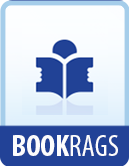The hornbook must have done its work well, or at least no better way of teaching the alphabet had been found when the Puritans came to America, for it was not many years before little folks in the New World were being taught from the famous New England Primer, which joined to what had been in the hornbook a catechism and various moral teachings. With its rude illustrations and its dry contents, this little book would probably be laughed at by school-children of to-day, if they did not stop to think how very many of the writers, statesmen and soldiers who have made our country great learned their first lessons from its pages. Somewhere between 1687 and 1690 it was first published, and for a hundred years from that time it was the schoolbook found in almost every New England home and classroom.
[Illustration: CHILDREN WITH HORNBOOKS]
Can you imagine what kind of reading lessons were in this primer? If you think they were like the lively little stories and the pleasing verses printed in your readers, you will he a good deal surprised to find that they are stern and gloomy tales that were meant to frighten children into being good, rather than to entertain them.
First of all in the little book came the alphabet and the lists of syllables, as in the hornbook. There was this difference, however. At the beginning of the first line of letters in the hornbooks was placed a cross, as the symbol of Christianity, and from this fact the first line was called the Christ-cross, or criss-cross row. But the Puritans strictly kept the cross out of the Primer, for to them it stood in a disagreeable way for the older churches from which they had separated themselves.
Then came a series of sentences from the Bible teaching moral lessons and illustrating the use of the letters of the alphabet, one being made prominent in each verse. The Lord’s Prayer and the Apostle’s Creed might appear next, followed by twenty-four alphabet rhymes with accompanying pictures. Most of these verses were upon Bible subjects, as in the case of the letter R, for example, illustrated by the lines:




